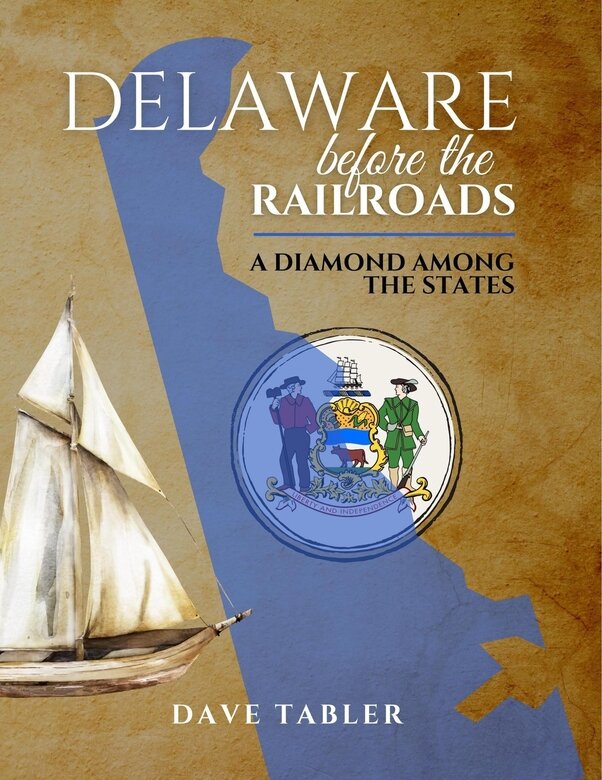
A brief yet beautifully detailed journey through Delaware’s past, and the colonial history of America itself, Delaware Before the Railroads by Dave Tabler is a revelatory peek into an oft-overlooked state, reading like a love letter to one of America’s first and most forgotten colonies. Topping out at just under 100 pages, this is an easy afternoon read for residents of Delaware, those interested in colonial lore, or fans of historical photography.
Despite having moved to Delaware only a dozen years ago, Tabler writes with the familiarity and affection of a lifelong native; his state-spanning explorations and historical tracking certainly give him the authority and mileage to write such a colorful and insightful guide. From the motivations of the Swedish to cross the Atlantic and pirate-based names around the state to architectural nuance in colonial buildings and early hints of social justice awareness, he manages to tell quite the tale of Delaware in a relatively small amount of space.
Throughout, Tabler’s devotion to research is admirable; the attention to detail and genuine interest in these subjects is charmingly passionate, which is only enabled by the informal manner in which the book is written. Many history-dense tomes will take on a lofty or erudite tone, along with countless footnotes and references to other dusty history books, but this author is more interested in spirited storytelling and bringing history to life, making these tidbits and colonial anecdotes accessible and entertaining, while still being informative about the state’s history.
The main driver of this passion project seems to be the photography, and while most of the images are well-framed and vivid, some of the photos do vary in quality and clarity, with a few seeming rushed, oddly angled, or simply not the best representation of the intended subject matter. With such a limited scope of content, every shot should be eye-catching, so slightly better curation of the visuals would ensure a more consistent experience for readers. For instance, “New Castle Courthouse Seen Through a Raindrop” is impressive and engaging, while the first gristmill image has the feel of a casual tourist snap.
Similarly, some of the text scattered amongst the images seems unnecessarily small in comparison to the size of the photos, and some of the color choices for the on-photo text could be altered for clearer contrast. Filling more of the negative space with text would elevate both the text and the photographs (e.g., the paragraph block beneath “Old Christ Church”). The same could be said of the book’s second section – larger font and some changes to formatting could increase appeal, particularly for traditionally older demographics.
That said, the second part of the book is where the more extended story of these images imbues them with additional energy and significance, with Tabler’s detailed notes explaining the photography, and creating a fuller portrait of the state. As a whole, this is a well-researched and well-curated tour through Delaware, offering not just a fascinating portrait of one state, but of America’s founding.
Book Links
STAR RATING
Design
Content
Editing
Get an Editorial Review | Get Amazon Sales & Reviews | Get Edited | Get Beta Readers | Enter the SPR Book Awards | Other Marketing Services























Leave A Comment